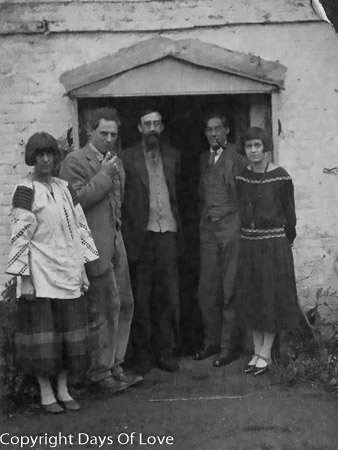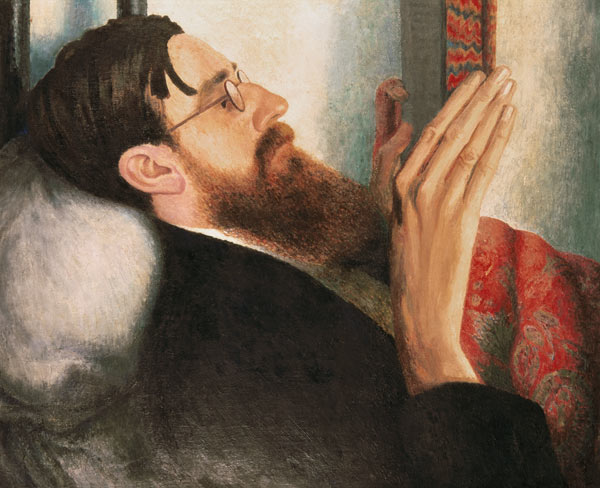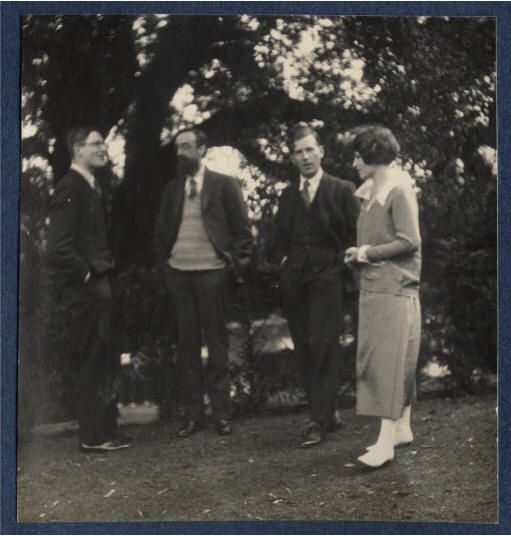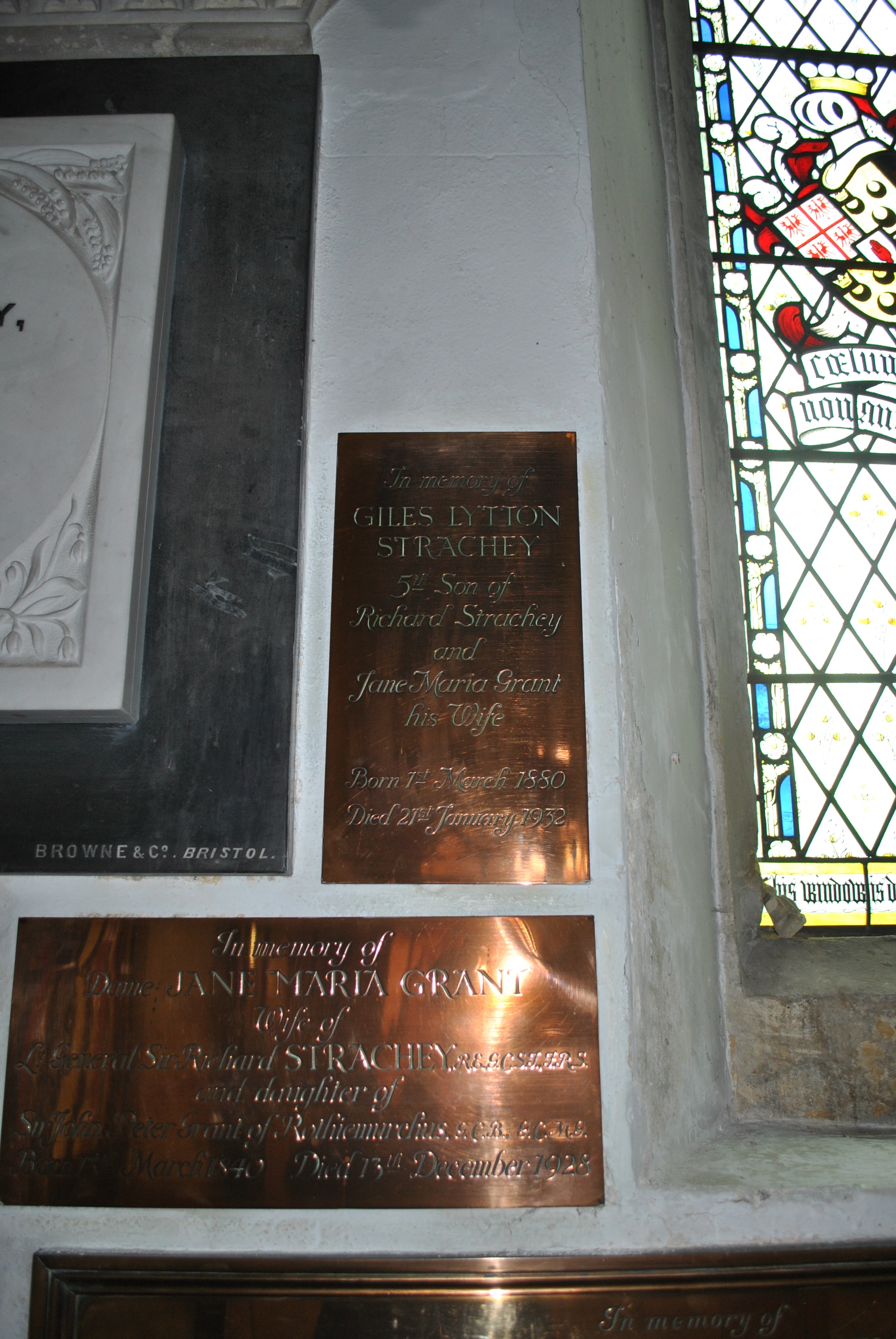Queer Places:
80 Rodney St, Liverpool L1, UK
Sutton Court, Stowey, Pensford, Bristol BS39 4DN, UK
University Of Cambridge, Cambridge CB2, UK
Stowey House, Windmill Dr, London SW4 9DE, UK
69 Lancaster Gate, London W2, UK
51 Gordon Square, Bloomsbury, London WC1H, UK
6 Belsize Park Gardens, London NW3, UK
67 Belsize Park Gardens, London NW3 4JN, UK
The Mill, Tidmarsh, Reading RG8 8ER, UK
Ham Spray House, Marlborough SN8 3QZ, UK
St Andrew, Tunbridge Cl, Chew Magna, Bristol BS40 8SU, UK
 Giles Lytton Strachey
[1]
(1 March 1880 – 21 January 1932) was a British writer and critic. He was part
of the Cambridge Apostles.
He appears as Risley in E.M.
Forster's novel Maurice (published posthumously in 1971). The Apes
of God (1930) by Wyndham Lewis contains a satirical portrait of him as
Matthew Plunkett. Wyndham Lewis portrayed him as Cedric Furber in
Self-Condemned (1954). Leonard Woolf
modelled one of the "epicures" in his novel The Wise Virgins (1914) on
him. The character of Neville in
Virginia Woolf's The Waves
(1931) is based in part on Lytton Strachey.
Giles Lytton Strachey
[1]
(1 March 1880 – 21 January 1932) was a British writer and critic. He was part
of the Cambridge Apostles.
He appears as Risley in E.M.
Forster's novel Maurice (published posthumously in 1971). The Apes
of God (1930) by Wyndham Lewis contains a satirical portrait of him as
Matthew Plunkett. Wyndham Lewis portrayed him as Cedric Furber in
Self-Condemned (1954). Leonard Woolf
modelled one of the "epicures" in his novel The Wise Virgins (1914) on
him. The character of Neville in
Virginia Woolf's The Waves
(1931) is based in part on Lytton Strachey.
A founding member of the
Bloomsbury Group and author of
Eminent Victorians, he is best known for establishing a new form of
biography in which
psychological insight and sympathy are combined with irreverence and wit.
His biography Queen Victoria (1921) was awarded the
James Tait Black Memorial Prize.
Strachey was born on 1 March 1880 at Stowey House, Clapham Common, London,
the fifth son and eleventh child of Lieutenant General Sir Richard Strachey,
an officer in the British colonial armed forces, and his second wife, the
former Jane Grant, who became a leading supporter of the women's suffrage
movement. He was named "Giles Lytton" after an early sixteenth-century Gyles
Strachey and the first Earl of Lytton, who had been a friend of Richard
Strachey's when he was Viceroy of India in the late 1870s. The Earl of Lytton
was also Lytton Strachey's godfather.[2]
The Stracheys had thirteen children in total, ten of whom survived to
adulthood, including Lytton's sister
Dorothy Strachey and youngest brother, the psychoanalyst,
James Strachey.
Lytton Strachey was part of the
Cambridge Apostles like John
Maynard Keynes. The
relation between the two leaders within the Apostles was always an ambivalent
one, riven by rivalry over their loves. There was the charming
George Duckworth: Strachey discovered by accident that Keynes was also after him.
There was abitter tussle as to who should sponsor him for the Apostolic
fellowship; Keynes, being more ruthless, won. We learn that "for two months
following the election of Duckworth, Lytton was filled with an almost demented
hatred of Keynes." He even "launched an extraordinary onslaught upon Keynes
before the assembled Apostles." Shockingly unethical, according to the gospel
of the Venerable Moore. Shortly Strachey transferred his affections to
Bernard Winthrop Swithinbank, and Duckworth transferred his to the irresistible
Duncan Grant. So Strachey was one, or possible two, up.
Then Lytton became ensnared by the beauty of Duncan. The next test for the
Apostle Moore's gospel was when Lytton found out - again by accident, for he
hadn't much psychological perception - that the predatory Keynes had captured
Duncan from him, and that Duncan returned his love. Accepting the mutuality of
this esteem, Lytton decided to apply Old Moore's almanac and strike the note
of magnanimity: "I don't hate you and, if you were here now, I should probably
kiss you, except that Duncan would be jealous, which would never do!" Keynes
wrote back in similar mood: "Your letter made me cry."


Lytton Strachey by Dora Carrington, 1916

Lytton Strachey by Henry Lamb

Lytton Strachey
Duncan Grant (1885–1978)
Charleston

Philip Charles Thomson Ritchie; Lytton Strachey
by Lady Ottoline Morrell
vintage snapshot print, 1924
3 7/8 in. x 2 1/8 in. (97 mm x 54 mm) image size
Purchased with help from the Friends of the National Libraries and the Dame Helen Gardner Bequest, 2003
Photographs Collection
NPG Ax141563

William David Hogarth; Lytton Strachey; Philip Charles Thomson Ritchie; Julian Vinogradoff (née Morrell)
by Lady Ottoline Morrell
vintage snapshot print, 1924
3 1/8 in. x 2 7/8 in. (78 mm x 74 mm) image size
Purchased with help from the Friends of the National Libraries and the Dame Helen Gardner Bequest, 2003
Photographs Collection
NPG Ax141562a
_Sprott;_Lytton_Strachey,_June_1926.jpg)
Lady Ottoline Morrell (1873–1938), vintage snapshot print/NPG Ax142600. Dora Carrington; Stephen Tomlin; Walter John Herbert ('Sebastian') Sprott; Lytton Strachey, June 1926

St Andrew, Chew Magna
At a military tribunal concerning his application for Conscientious
Objector status, in 1916, Lytton Strachey was asked what he would do if he saw
a German soldier raping his sister. He replied, ‘I would try to get between
them.’
Though Strachey spoke openly about his homosexuality with his Bloomsbury
friends, and had relationships with a variety of men including
Ralph Partridge, details of Strachey's sexuality were not widely known
until the publication of
a biography by
Michael Holroyd in the late 1960s.
Dora Carrington, the painter, and Strachey participated in a lifelong open
relationship, and eventually established a permanent home together at Ham
Spray House, where Carrington would paint and Strachey would educate her in
literature.[21]
In 1921 Carrington agreed to marry Ralph Partridge, not for love but to secure
their three-way relationship that consisted of herself, Strachey and
Partridge. Partridge eventually formed a relationship with Frances Marshall,
another Bloomsbury member.[22]
Shortly after Strachey died, Carrington committed suicide. Partridge married
Frances Marshall in 1933. Strachey himself had been much more interested
sexually in Partridge, as well as in various other young men,[23]
including a secret
sadomasochistic relationship with
Roger Senhouse (later the head of the publishing house
Secker & Warburg).[24]
Strachey's letters, edited by Paul Levy, were published in 2005.[25]
W. Somerset Maugham
first met Alan Searle in 1928, when
Searle was "a very youthful looking twenty-three, a working class boy from
Bermondsey, the son of a Dutch tailor and cockney mother". He was the lover of several famous older men, including Lytton Strachey,
who called Searle his "Bronzino boy".
In 1930, after dining with various homosexual men, including
E.M. Forster and
Lytton Strachey, whose conversation
strayed on to the topic of attractive youths,
Virginia Woolf said she had
received ‘a tinkling, private, giggling impression. As if I had gone into a
men’s urinal.’ Of
Eddy Sackville-West she said, quite simply, ‘I can’t take Buggerage
seriously.’ Hermione Lee, her biographer, comments, as follows: ‘Like
Simone de Beauvoir twenty years later … the feminist in her deplored the fact that
gay men seemed to want to be women. And she must also have felt that
homosexuality was, for the next generation of writers, an exclusive exclusive
passport for literary success.’
The private letters of
Lytton Strachey
reveal that Roger Senhouse was his last lover, with whom he had a secretly
sado-masochistic relationship in the early 1930s.[1]
According to a letter, Lytton "anxiously hovered, blowing hot and cold over
Philip Ritchie,
and alternately cold and hot over his companion, Roger Senhouse."
Strachey died of stomach cancer on 21 January 1932, aged 51. It is reported
that his final words were: "If this is dying, then I don't think much of it."
[20]
My published books:


BACK TO HOME PAGE

- https://en.wikipedia.org/wiki/Lytton_Strachey
- Woods, Gregory. Homintern . Yale University Press. Edizione del
Kindle.
- Homosexuals in History, A Study of Ambivalence in Society, Literature
and the Arts, by A.L. Rowse, 1977
 Giles Lytton Strachey
[1]
(1 March 1880 – 21 January 1932) was a British writer and critic. He was part
of the Cambridge Apostles.
He appears as Risley in E.M.
Forster's novel Maurice (published posthumously in 1971). The Apes
of God (1930) by Wyndham Lewis contains a satirical portrait of him as
Matthew Plunkett. Wyndham Lewis portrayed him as Cedric Furber in
Self-Condemned (1954). Leonard Woolf
modelled one of the "epicures" in his novel The Wise Virgins (1914) on
him. The character of Neville in
Virginia Woolf's The Waves
(1931) is based in part on Lytton Strachey.
Giles Lytton Strachey
[1]
(1 March 1880 – 21 January 1932) was a British writer and critic. He was part
of the Cambridge Apostles.
He appears as Risley in E.M.
Forster's novel Maurice (published posthumously in 1971). The Apes
of God (1930) by Wyndham Lewis contains a satirical portrait of him as
Matthew Plunkett. Wyndham Lewis portrayed him as Cedric Furber in
Self-Condemned (1954). Leonard Woolf
modelled one of the "epicures" in his novel The Wise Virgins (1914) on
him. The character of Neville in
Virginia Woolf's The Waves
(1931) is based in part on Lytton Strachey.





_Sprott;_Lytton_Strachey,_June_1926.jpg)


